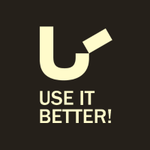What Are the Recent Trends in A/b Testing Tools?
Because they enable companies to optimize their websites and campaigns for optimal conversions, A/B testing tools have become a crucial component of any marketing plan. Keeping abreast of the most recent developments in A/B testing tools is essential to staying ahead of the competition in the rapidly evolving fields of marketing and technology. The following current trends are influencing the market for A/B testing tools:
1. Personalization and AI-based testing: A/B testing tools have been developed to include AI-based algorithms to customize website content, layout, and messaging according to user behavior and preferences as a result of consumer demands for more individualized experiences. Businesses can save time and work by using these tools to automatically test and optimize many variations.
2. Mobile optimization: A/B testing tools have turned their attention to mobile optimization since mobile devices now account for the majority of internet traffic. With the help of these tools, companies can test and improve their mobile apps and websites to improve user experience and increase conversions.
3. Integration with other tools: A/B testing technologies have been merged with other marketing tools like CRM, analytics, and content management systems, and are no longer standalone solutions. Businesses are able to make data-driven decisions and have a more thorough insight of client behavior thanks to this connectivity.
4. Real-time testing and data analysis: In the fast-paced digital world of today, real-time testing and data analysis have become essential. These days, A/B testing technologies can perform tests in real-time and deliver findings instantly, enabling organizations to make well-informed decisions quickly.
5. Usability and accessibility: As A/B testing spreads throughout companies of all kinds, there is a growing need for tools that are easy to use and accessible to team members who are not technical. straightforward drag-and-drop interfaces are now available in A/B testing programs, making it straightforward for anyone without a lot of technical expertise to set up and conduct experiments. In summary, the technologies used for A/B testing have become increasingly complex, customized, and integrated with other marketing tools.
Benefits of Using A/b Testing Tools
Businesses employ A/B testing, sometimes referred to as split testing, to compare two iterations of a webpage or campaign and ascertain which one works best. In order to ascertain which version is more successful in producing the intended result, a randomly chosen sample of users or visitors is shown two variations (A and B), and their behavior is examined. Software products known as A/B testing tools make it simple and effective for companies to carry out this kind of testing. The advantages of utilizing A/B testing tools and how they may enhance your business plans and finally lead to success will be discussed in this buyer's guide.
1. Enhanced User Experience: Enhancing the user experience on your website or app is one of the primary advantages of utilizing A/B testing solutions. You can determine which design, layout, content, or functionality your target audience prefers by developing and testing various iterations of your website or app. By making your app or website more user-friendly and optimizing it, you may boost consumer happiness, engagement, and conversions.
2. Making Decisions Based on Data: A/B testing tools give you useful information and insights on how well your app or website works. By monitoring a variety of indicators, including click-through rates, bounce rates, and conversion rates, these tools enable you to base your decisions on factual information rather than conjecture. You may enhance your website or app, develop more successful marketing campaigns, and boost total return on investment with this data-driven strategy.
3. Economical: When compared to more conventional techniques like focus groups or polls, using A/B testing tools might be a more affordable way to test and enhance your website or app. By removing the need for tangible materials and lengthy testing periods, these solutions improve process efficiency and reduce costs. Additionally, by concentrating on what truly works for your audience, the information gathered from A/B testing will assist you in more effectively allocating your budget.
4. Better App/Website Performance: A/B testing tools allow you to test various aspects of your website or app in order to find and fix any problems that might be impairing its functionality. This includes pages that load slowly, layouts that are unclear, or broken links that can be driving customers away from your app or website. Your website or app may function more smoothly as a result, which will satisfy users and boost conversions.
5. Easy and Fast Examining: A/B testing tools provide a straightforward and easy-to-use interface for testing, which speeds up and simplifies the process. You can select the parameters for your test and create various variations with a few clicks, without the need for technical knowledge or code. Because of this, companies of all sizes may use it to enhance their websites or apps and make data-driven choices without requiring outside assistance.
Important Factors to Consider While Purchasing A/b Testing Tools?
There are a number of crucial considerations to make when buying A/B testing software. Selecting the best tool for your company's needs is vital because these tools are necessary for optimizing and enhancing your website. When selecting your choice, keep the following important considerations in mind:
1. Feature set: The A/B testing tool's feature set should be taken into account first. Along with more sophisticated capabilities like heatmaps, user activity tracking, and personalization, it should have standard functions like segmentation, A/B testing, and multivariate testing. Evaluate your needs and select a tool whose characteristics complement your objectives.
2. Usability: A/B testing software must be simple to use and intuitive. Seek out platforms that require little coding expertise and have drag-and-drop editors and user-friendly interfaces. This will save you time and money by making it simpler for you to set up and conduct experiments.
3. Integration capabilities: Verify that the A/B testing tool works well with the tools you already have, such your marketing automation tool or website content management system. This will give you important insights and enhance your testing procedure overall by enabling you to evaluate and act upon data gathered from your trials in real-time.
4. Data management and analysis: Strong data management and analysis features are essential for a quality A/B testing platform. This includes the capacity to create comprehensive reports, export data for additional research, and track, report, and visualize data.
5. Cost: Since A/B testing tools can cost anywhere from free to hundreds of dollars a month, it's critical to assess your spending limit and evaluate price structures offered by various suppliers. Select a tool that suits your budget and provides the highest return on investment by taking into account the features and value you will receive for your money.
6. Customer service: Seek out an A/B testing tool supplier that provides dependable customer service via chat, email, or phone. It's crucial to have an experienced support staff on hand to help you with any technical problems or inquiries you may have while utilizing the product. When buying A/B testing solutions for your company, you can make an informed choice by taking these aspects into account. To help you improve your website and accomplish your objectives, don't forget to evaluate your demands, evaluate features and costs, and select an easy-to-use and well-supported solution.
What Are the Key Features to Look for in A/b Testing Tools?
Businesses trying to enhance their website or app for increased user engagement and conversions must have access to A/B testing tools. It might be difficult to choose the ideal tool for your company, though, because there are so many possibilities on the market. When selecting an A/B testing tool, the following essential features should be taken into account to facilitate the process:
1. User-friendly interface: Seek out a program that is easy to use so that even without technical expertise, you can set up tests and traverse it with ease.
2. Diverse testing choices: A decent A/B testing platform should provide a range of testing choices, including split URL, multivariate, and A/B testing. This will enable you to experiment with various website components and determine the most effective combination for maximizing conversions.
3. Real-time results: In order for you to make adjustments while on the go and observe the effects right away, the tool should offer real-time results. This will help you make data-driven decisions and save you time.
4. Targeting and segmentation: Using sophisticated A/B testing tools, you may target particular audience segments and tailor your trials according to their demographics, behavior, and other characteristics.
5. Tool integration: Take into account a tool that can be integrated with other marketing and analytics programs that you now use. This will streamline your workflow and make tracking and analyzing your findings easier.
6. Customization options: Seek out a technology that lets you modify the user experience, such sending out customized messages or suggesting goods based on the outcomes of the trial.
7. Mobile optimization: Having a solution that can test and optimize your website for mobile devices is essential in today's mobile-first market. Verify that the tool you select has this capability.
8. Pricing and support: Assess the tool's pricing schemes and customer service. Before making a purchase, you can test the tool to determine if it fulfills your needs with the help of free trials or freemium versions offered by some companies. You may choose the best A/B testing tool to meet your business objectives and enhance the functionality of your website by taking into account these important factors. Remember that various tools may have varying degrees of functionality, so it's critical to rank the aspects that are most critical to your company's goals.
What Is the Level of Customization Available in A/b Testing Tools?
Tools for A/B testing provide different degrees of customisation to meet the unique requirements and objectives of companies. With the help of these tools, users can produce several iterations of a website or app component and compare them to see which one works best. The success of an A/B test and the conclusions drawn from it can be significantly impacted by customization options. Depending on the kind of tool being used, different A/B testing tools offer different degrees of customization.
Basic customization features like altering a website element's colors, fonts, and images are provided by certain tools. Others offer more sophisticated functionality, such as the ability to alter the pieces' size, content, and positioning. The amount of changes permitted in an experiment is one method to gauge the degree of customization provided by an A/B testing platform. While some technologies allow for an infinite number of variations, others restrict it to a certain number.
When testing numerous components at once, this can be very helpful for complex or multivariate tests. Furthermore, control over the audience segment under test can also dictate the degree of customisation. While some systems provide comprehensive targeting choices based on demographics, behavior, or even previous interactions with the website or app, others just enable targeting of a general population.
The ability to alter the A/B test's duration should also be taken into account. This is crucial since it enables users to choose the best test duration based on their target audience and website traffic trends. For A/B testing, some tools have a predetermined period, while others let users change it to suit their needs. Additionally, some A/B testing solutions allow you to personalize the objectives and metrics that are monitored during an experiment.
This can include metrics like time spent on a page, conversion rates, and click-through rates. Businesses may gain more insightful information if they are able to monitor and evaluate particular objectives. In conclusion, the degree of customization offered by A/B testing platforms can significantly affect the efficacy of studies and the knowledge they yield. When assessing the degree of customisation provided by various tools, buyers must take into account their unique requirements and objectives in order to identify the one that best suits their company.
Which Industries can benefit the most from A/B Testing Tools?
Businesses may optimize their websites, landing pages, and marketing efforts with the help of A/B testing. Businesses can obtain information and insights to enhance their overall conversion rates and online visibility by experimenting with various iterations of these components. Although a variety of businesses can benefit from A/B testing, some can experience a greater impact than others. We will examine which industries stand to gain the most from A/B testing tools in our buyer's guide.
1. E-commerce: By enabling them to test and improve their product pages, checkout procedures, and promotions, e-commerce companies can greatly profit from A/B testing software. E-commerce businesses can determine whether layout, style, or call-to-action buttons increase conversions and sales by testing various iterations of their website. A/B testing can also assist e-commerce companies in comprehending how various price schemes and product positioning affect the purchasing habits of their clientele.
2. Digital Marketing and Advertising: To improve their online advertisements, emails, and landing pages, digital marketers and advertisers need to use A/B testing. They can use A/B testing to test various calls-to-action, pictures, and ad copy to see which ones work best for their target market. They may increase their conversion rates, click-through rates, and, eventually, return on investment (ROI) by doing this.
3. Software and SaaS Companies: A/B testing can assist software and SaaS companies in optimizing their user experience, as they frequently have intricate websites and products. These businesses can find the most effective and user-friendly design to boost user adoption and retention by testing various user flows and interfaces. A/B testing can also assist SaaS organizations in refining their upselling and pricing tactics.
4. Publishing and Media: To draw in more readers and boost engagement, publishing and media organizations can improve their content, including headlines, graphics, and formats, by using A/B testing tools. To find the best choice for their audience, businesses can also use A/B testing to test various price schemes and subscription models.
5. Travel and Hospitality: From layout to pricing and promotions, hotels, airlines, and other travel and hospitality companies can use A/B testing to enhance their online booking procedures. These businesses can determine the best strategy for turning website visitors into customers by experimenting with several versions. A/B testing can also assist these companies in comprehending how pricing and advertising tactics affect the booking habits of their clients.
Conclusion
To sum up, A/B testing tools are crucial for companies trying to improve their marketing efforts, apps, or websites. With the help of these tools, you may experiment with various components and variants to find the best one, which will enhance your overall performance and boost conversions. The features, usability, cost, and customer service provided by the tool are all important factors to take into account when selecting the best A/B testing solution for your company.
Adobe Target, VWO, Optimizely, and Google Optimize are a few of the well-liked solutions available on the market. Before choosing, be sure to evaluate your company's needs and objectives. You can also try out free trials or demos to see how the product works. Keep in mind that the ideal tool is one that meets your unique needs and can offer insightful information to support your data-driven decision-making.
Long-term benefits of investing in an A/B testing solution include higher conversion rates, happier customers, and eventually higher revenue. To advance your company, take your time, do extensive research, and make a well-informed choice.






















